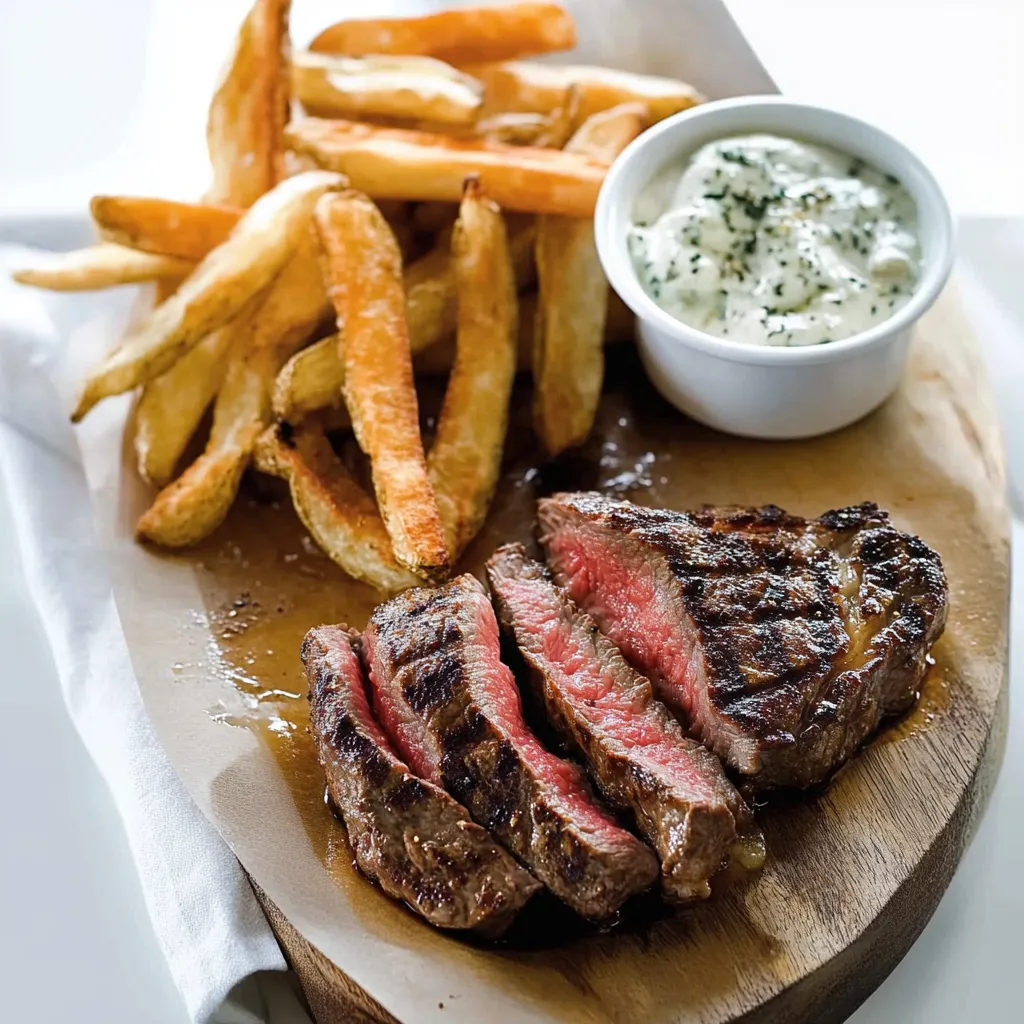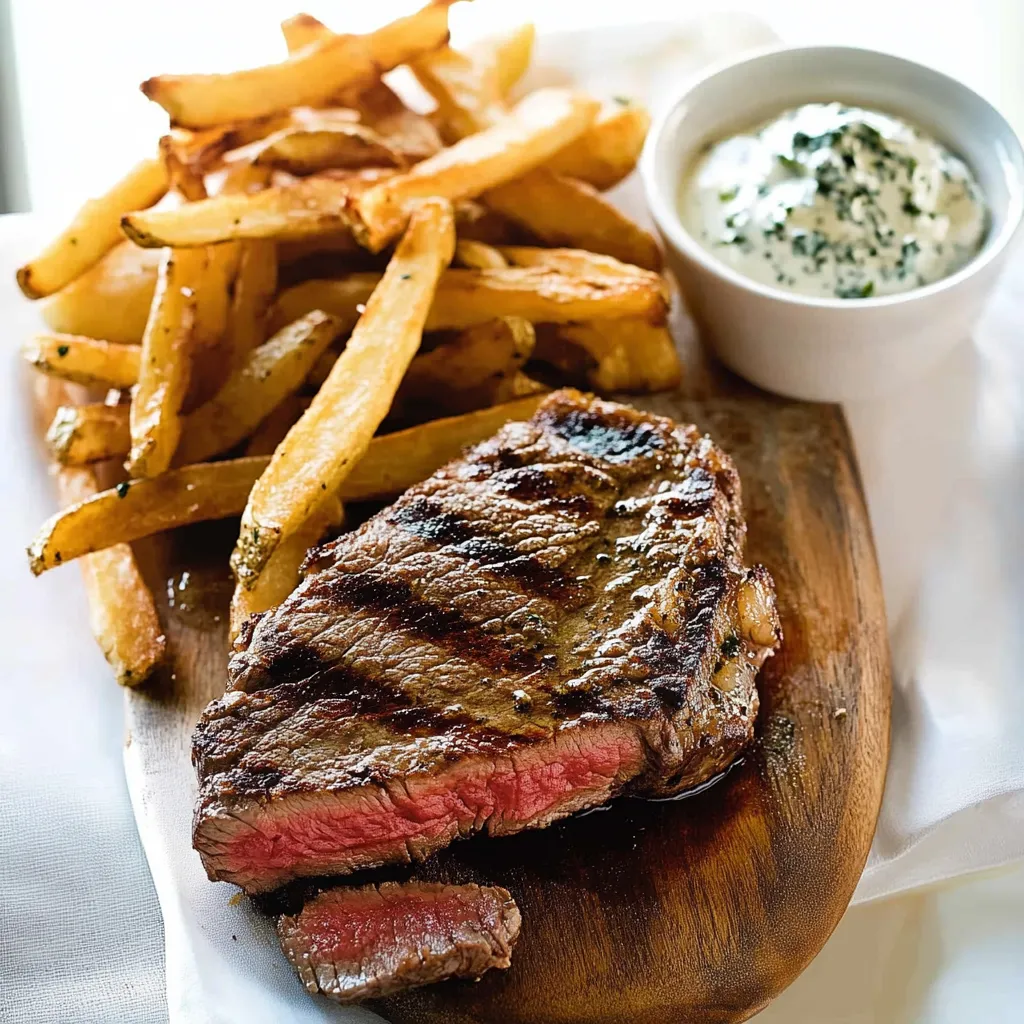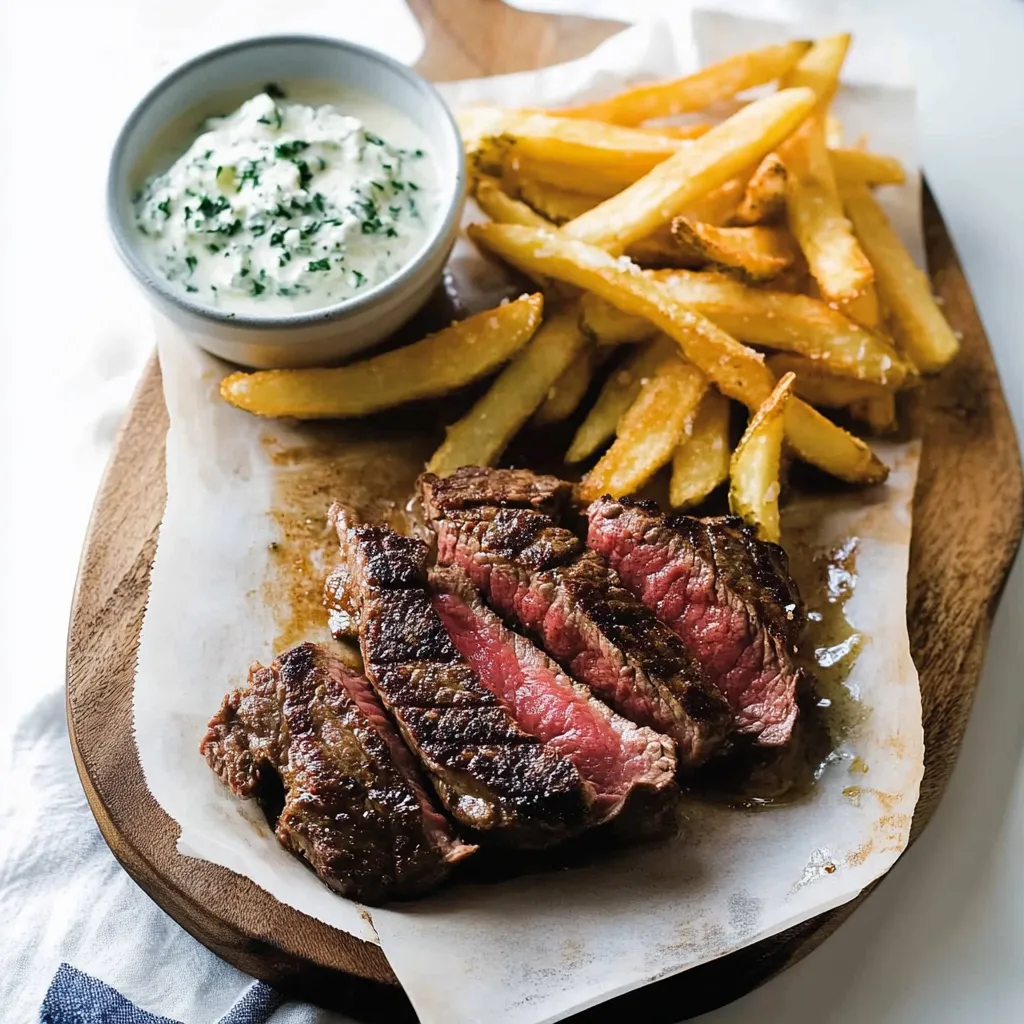 Pin it
Pin it
French Steak Frites stands out as the ultimate bistro comfort meal - a juicy seared steak sitting next to golden crunchy fries, topped with a rich citrus-herb butter blend. This fancy meal turns your regular dinner into something special you can make at home.
I've tweaked this meal through many family get-togethers and found that if you let your meat sit while giving the fries their last cook, everything will be hot and fresh when it hits the table.
Key Components
- Top-quality beef (ribeye, strip sirloin, or filet mignon) : Pick cuts with good fat marbling at least 1-inch thick for maximum taste and tenderness
- Russet potatoes : Their starchy nature gives you fries with crunchy outsides and soft centers
- Living herbs (green onions, thyme, rosemary) : These create a fragrant butter mixture that takes the whole dish up a notch
- Unsalted butter : Lets you add just the right amount of salt while making everything taste richer
- Oil with high heat tolerance : Try grapeseed or avocado oil for perfect browning without smoke
Step-By-Step Cooking Guide
- Step 1: Making Flavor-Packed Butter
- Leave butter out for half an hour to soften. Beat it until fluffy and light, roughly 5-7 minutes. Mix in your chopped herbs, crushed garlic, lemon peel, and juice. Add sea salt and fresh black pepper. Form into a log with parchment and put in fridge.
- Step 2: Crafting Fantastic Fries
- Slice potatoes into even ¼-inch sticks. Let them sit in cold water for 30 minutes to wash away starch. Drain well and dry completely. Cook first at 300°F for 3 minutes until soft but barely golden. Take a break while cooking steak. Finish at 350°F for 3 minutes until they turn crispy and golden.
- Step 3: Cooking Your Steak
- Let steak sit at room temp for half an hour. Dry it thoroughly and add plenty of sea salt and pepper. Get your pan super hot. Cook without moving for 3 minutes. Throw in butter, herbs, and garlic. Turn over and spoon the butter mix over it for 3 minutes. Let it rest on a warm dish while you finish the fries.
 Pin it
Pin it
I grew up in a household that really valued good eating, and I learned early on that fancy butter makes everything better. My grandma always told me her kitchen secret was a tasty herb butter - it's crazy how this simple thing can make your cooking taste like a restaurant meal.
Mastering Heat Control
Using a cast iron pan gives you the best crust on your steak. It spreads heat evenly for better cooking all around. At the same time, watching your oil temperature for fries is super important - too hot and they'll get burned, too cool and they'll soak up oil and get soggy.
Great Side Additions
French restaurants usually put a basic green salad next to this dish, but I love adding cooked sweet shallots for more flavor. Their sweetness goes really well with the savory meat and crunchy fries.
Looking back: After making this meal countless times, I've learned that getting the timing and heat just right makes all the difference. There's something so satisfying about cutting into a perfectly cooked steak and using crispy fries to soak up all those tasty juices. This has become our family's go-to celebration meal, always requested for birthdays and special events. I still get excited every time I serve this restaurant-quality food at our dining table.
 Pin it
Pin it
Frequently Asked Questions
- → Which potatoes make the best fries?
- Russets are your best bet because they're rich in starch. This helps give you fries with a flaky inside and crispy outside after double-frying.
- → Why double-fry the potatoes?
- The first fry cooks the inside of the fries gently. Then the second fry, which is hotter, makes them golden and crunchy on the outside.
- → Can herb butter be prepped early?
- Absolutely! You can make it days ahead and keep it in the fridge. It even freezes well for up to 3 months.
- → How do I get a great sear on steak?
- Use a super hot pan, dry the steak well, and season it beforehand. Press lightly at first to create a good crust, and avoid moving it until it's ready.
- → How long should the steak rest after cooking?
- Wait 3-4 minutes before cutting into it. This step helps lock the juices inside, making the steak more flavorful.
